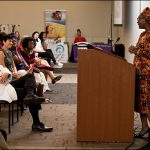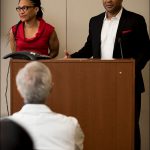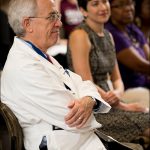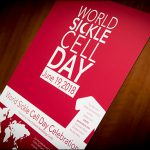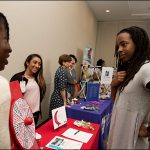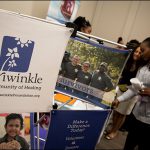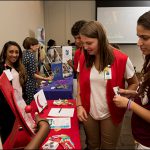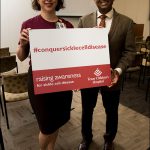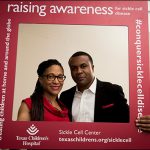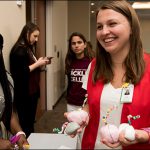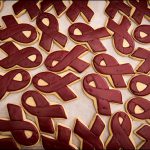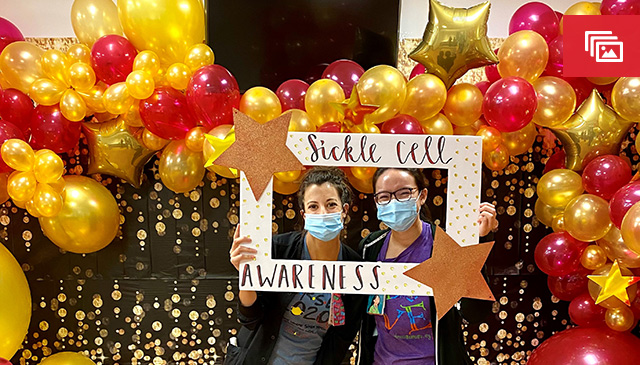
Texas Children’s Hematology Center participated in virtual celebrations and community awareness activities during National Sickle Cell Disease and Immune Thrombocytopenia (ITP) Awareness Month.
Throughout the month of September, our Hematology Center staff honored our patients and their families who have been touched by sickle cell disease and ITP, two types of blood disorders that the center treats annually. While this year’s activities were celebrated in a virtual and socially distant way to keep everyone safe during COVID-19, the celebrations not only recognized our patients, but celebrated our hematology staff who play an important role in improving the care and outcomes of patients with blood disorders.
“We look forward each year in September to raising public awareness about sickle cell disease and ITP,” said Dr. Jenny Despotovic, director of Texas Children’s Hematology Center. “We are grateful to our patients and to our team, who continue to help us advance research towards developing novel treatment approaches to improve the long-term outcomes for patients with these rare types of blood disorders.”
Several highlights from Texas Children’s sickle cell disease and ITP awareness activities included:
Sport Purple for Platelets Day
In recognition of Sport Purple for Platelets Day on September 25, Dr. Jenny Despotovic explains in this video, why we wear purple to show support and advocate for children and adults with ITP, an immune-related blood clotting disorder of platelets that can lead to excessive bruising and bleeding. Approximately 60 to 70 new patients with ITP are seen at Texas Children’s Hematology Center every year.
Making a Mark Virtual art gallery
Presented by The Periwinkle Foundation, the Making A Mark® exhibition showcased art and creative writing by children ages 3 to 22 who have been affected by cancer and blood disorders. The exhibit opens each year in September and this year it was hosted virtually on The Periwinkle Foundation website. The exhibit featured over 130 pieces of art and creative writing made by patients and their siblings. A panel of guest judges selected 15 purple ribbon pieces which they feel convey a positive message about childhood cancer and blood disorders awareness. Click here to access the art gallery.
Sickle Cell Twitter party
To focus attention on the need for research and treatment of sickle cell disease, the 7WT nursing unit partnered with the Sickle Cell Disease Association of America (SCDAA) for a Twitter party. This year’s theme was “Sickle Cell Matters”. The staff on the unit decorated the family lounge with a balloon wall for photos and gifted their Sickle Cell Disease patients with a token of love. The patients, nursing and physician staff were all invited to join in on the fun. Photos were taken with signs in an effort to increase awareness about sickle cell disease and sickle cell trait during the month of September. In recognition of sickle cell disease awareness month, patients visiting our outpatient clinic received red Mardi Gras beads and red ribbons to decorate and write inspiring messages for others facing this disease.
Hematology staff video messages
To celebrate our patients and their families, our Hematology team gathered virtually to share inspiring video messages throughout the month of September. Click here to view messages from Drs. Titi Fasipe and Venée Tubman, co-directors of the Sickle Cell Disease Program, and Dr. Amber Yates, associate director of the Pediatric Hematology and Oncology Fellowship Program.
Other community outreach efforts
Our Hematology staff also engaged in numerous sickle cell disease and ITP awareness activities:
- Dr. Jenny Despotovic was recently recognized as an Expertscape World Expert in Idiopathic thrombocytopenic Purpura (ITP), the most common immune hematologic disorder. Despotovic is the editor of the Immune Hem textbook. A number of our hematologists at Texas Children’s Hospital contributed to this textbook. Click here to read more about this scholarly milestone.
- Dr. Venée Tubman was recently awarded a five year K23 grant from the National Heart, Lung and Blood Institute of the National Institutes of Health for her project, “Characterization of B lymphocyte deficiency in pediatric sickle cell disease.” On September 30, Tubman will deliver a presentation on “The Impact of Race and Racism on Individuals with Sickle Cell Disease” during a webinar hosted by Harvard Medical School that focuses on addressing health care disparities.
- Dr. Titi Fasipe was an invited co-guest with Mary Hulihan, Dr.PH, of the Centers for Disease Control on a live podcast, Saturday Mornings with Joy Key, on September 12..The podcast was aired on BlogTalkRadio. Also, Fasipe participated in the American Society of Hematology (ASH) Virtual Hill Day and met with congressional staff virtually during the week of Sept 21. Fasipe was selected as a reviewer of the consensus report on “Addressing Sickle Cell Disease: A strategic Plan and Blueprint for Action.” As Chair of the Houston Sickle Cell Collaborative, Fasipe will participate in a panel discussion during the Virtual Sickle Cell Advocacy Summit on October 8 titled “Harnessing the Power of the Collective,” and will provide closing remarks. TCH Sickle Cell Program will have a virtual booth.
- Dr. Amber Yates participated in a webinar sponsored by the Red Cross – Los Angeles as part of their Community Conversations series titled Sickle Cell: The Heroes and the Facts. She also presented on the use of Hydroxyurea in the treatment of sickle cell disease for a program called SCD Talks with Agnes, who is the founder of Australian Sickle Cell Advocacy, a community based organization for people with SCD in Australia. Yates was asked to “takeover” the HHS Office of the Chief Technology Officer Twitter handle on Sept. 22 to amplify her voice about SCD and she also participated in the Roundtable on Leveraging Data to Address Sickle Cell Disease hosted by the HHS Office of the Chief Technology Officer. Yates was asked to serve on the Editorial Board for Pediatric Blood and Cancer, and as deputy editor of AAP PREP Hematology-Oncology Editorial Board.
Click here to learn more about Texas Children’s Hematology Center.


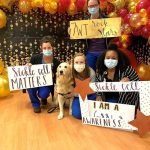


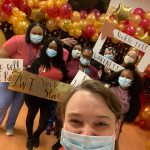
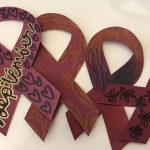


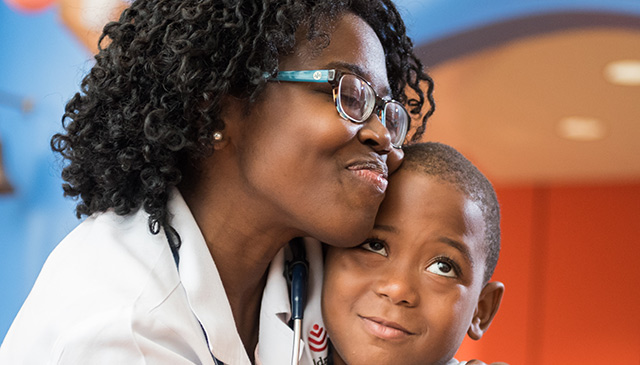
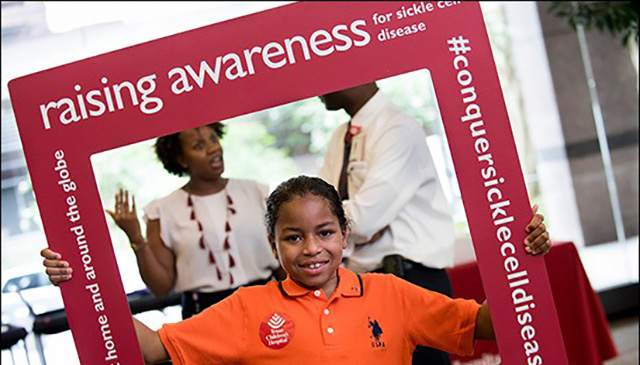
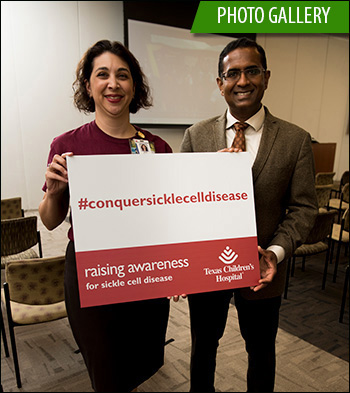 For the second consecutive year, Texas Children’s Sickle Cell Center hosted a celebration in honor of World Sickle Cell Day. On June 19, sickle cell patients, families, physicians, researchers and others joined forces to raise awareness about sickle cell disease, an inherited red blood cell disorder that affects about 100,000 Americans and many more worldwide.
For the second consecutive year, Texas Children’s Sickle Cell Center hosted a celebration in honor of World Sickle Cell Day. On June 19, sickle cell patients, families, physicians, researchers and others joined forces to raise awareness about sickle cell disease, an inherited red blood cell disorder that affects about 100,000 Americans and many more worldwide.

